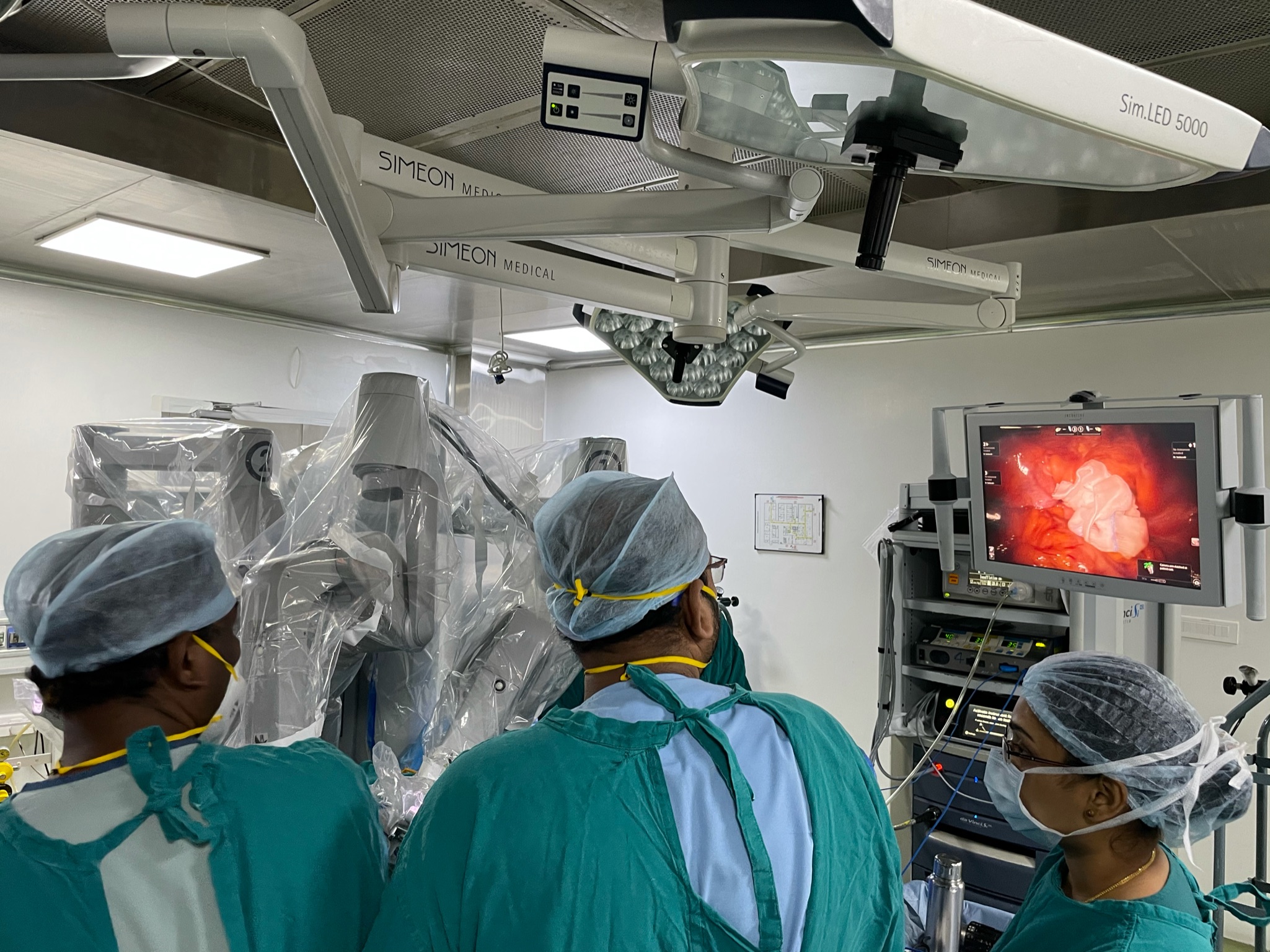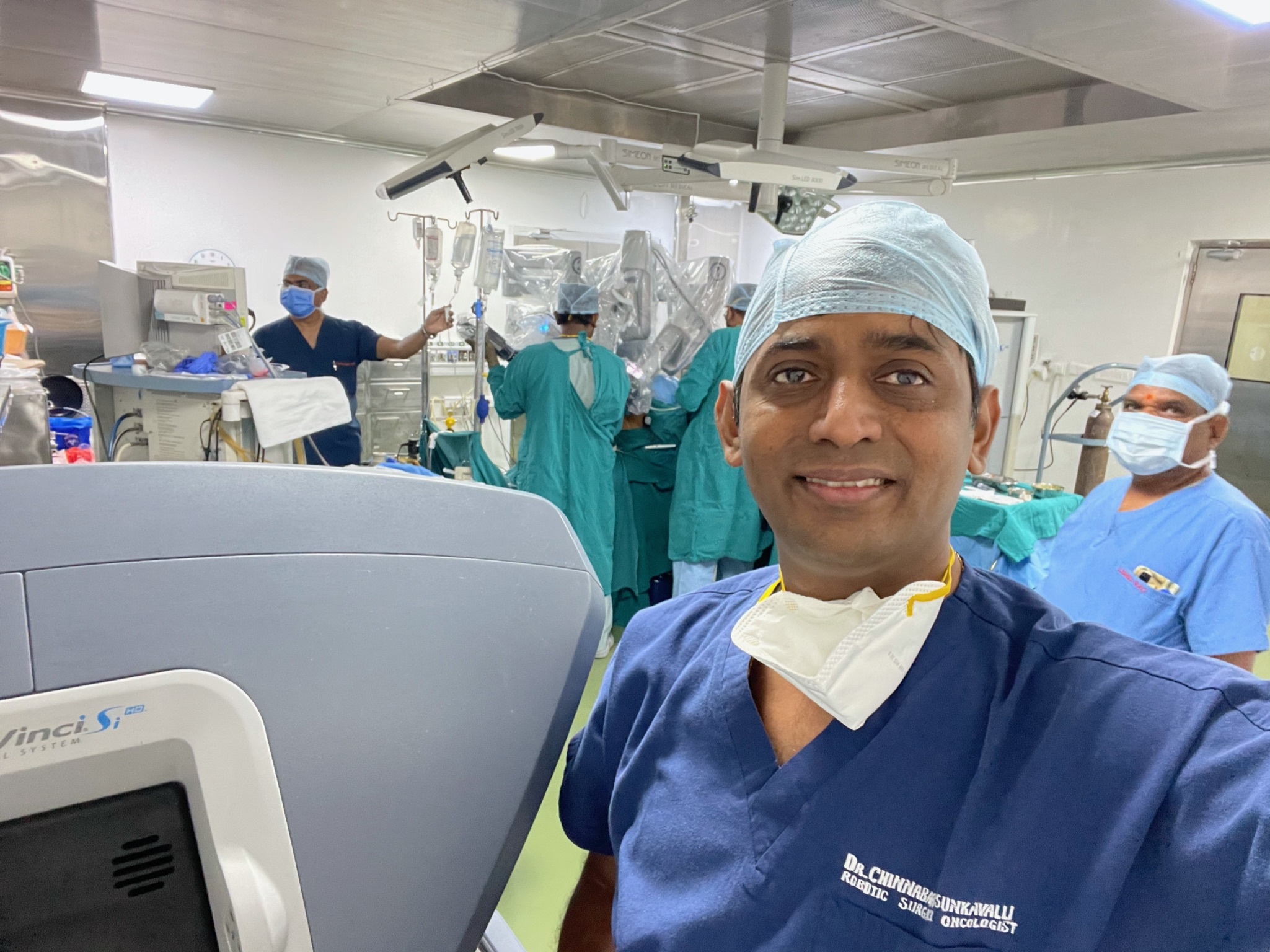what is robotic surgery
What is Robotic Cancer Surgery
A minimally invasive approach that is an alternative to open surgery, as well as laparoscopic surgery, is Robotic surgery. As the incisions placed are much smaller and there are is the three-dimensional vision the quality of surgery performed is of best quality in terms of precision and operative control for the surgeon. The recovery is much quicker compared to conventional open surgery and patients can take additional treatments if needed at an earlier date. It involves a computer interface in comparison to traditional laparoscopic surgery. It is based on a technology called the master-slave relationship. The robot imitates the surgeon’s movements with great precision. The benefits of robotic surgery are :

- NLesser pain
- NLower infection
- NLesser complications
- NEarly and fast recovery
- NShort stay in the hospital
- NEarly return of physiological, physical functions and return to work
The Best Robotic surgery hospital in Hyderabad provides a wide range of medical services in Robotic Oncology with 20 years of well-experienced Dr. ChinnaBabu Sunkavalli is an experienced robotic surgeon and one of the best surgical oncologists who performs minimally invasive robotic surgeries for cancer of uterus, stomach, esophagus, pancreas, liver colon, head and neck and thoracic malignancies.
How Robotic Surgery works?
The robotic surgeon operates from a comfortable ergonomic position at a console as facilitated by da Vinci robots design. The eyes and hands are in the same line as the instruments and target anatomy is a three-dimensional high definition vision. The potential benefits are
- NBetter range of motion
- N Amplified dexterity
- N Maximal surgical precision
- NIn-depth and enhanced high definition vision makes remote areas easily visible.
- N Better access to remote areas.
- NSparing of important structures like nerves and healthy tissue while removing cancer bearing tissue.

Da Vinci surgery involves making mini incisions for placement of a high range of motion miniature instruments and high definition three-dimension camera inside the patient. The surgeon can have a magnified high-resolution image of the operative site.
With the surgeon sitting at a console, he has access to controls below the viewer with eyes and hands in line with the high dexterity instruments and the camera. The robot imitates in real-time, the movements of surgeons hands, wrists and fingers via its instruments which are placed inside the patient. The surgeon is in control of every single movement throughout the procedure. The robot can not autonomously act without the command from the surgeon.